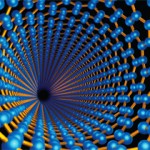Results: Among the 197 patients studied, adiponectin demonstrated a strong association with radiographic damage, with the log SHS score increasing by 0.40 units for each log unit increase in adiponectin (P=0.001) after adjusting for pertinent predictors of radiographic damage. Adiponectin independently accounted for 6.1% of the explainable variability in SHS score, a proportion comparable with rheumatoid factor, and greater than HLA-DRB1 shared epitope alleles or C-reactive protein levels. Resistin and leptin were not associated with radiographic damage in adjusted models. An inverse association between visceral fat area and radiographic damage was attenuated when adiponectin was modeled as a mediator. The association of adiponectin with radiographic damage was stronger in patients with longer disease duration.
Conclusion: Adiponectin may represent a mechanistic link between low adiposity and increased radiographic damage in RA. Adiponectin modulation may represent a novel strategy for attenuating articular damage.
Adiponectin-mediated changes in effector cells involved in the pathophysiology of rheumatoid arthritis. (Arthritis Rheum. 2010;62:2886-2899.)
Abstract
Objective: Rheumatoid arthritis (RA) is associated with increased production of adipokines, which are cytokine-like mediators that are produced mainly in adipose tissue but also in synovial cells. Since RA synovial fibroblasts (RASFs), lymphocytes, endothelial cells, and chondrocytes are key players in the pathophysiology of RA, this study was undertaken to analyze the effects of the key adipokine adiponectin on proinflammatory and prodestructive synovial effector cells.
Methods: Lymphocytes were activated in part prior to stimulation. All cells were stimulated with adiponectin, and changes in gene and protein expression were determined by Affymetrix and protein arrays. Messenger RNA and protein levels were confirmed using semiquantitative reverse transcription-polymerase chain reaction (PCR), real-time PCR, and immunoassays. Intracellular signal transduction was evaluated using chemical signaling inhibitors.
Results: Adiponectin stimulation of human RASFs predominantly induced the secretion of chemokines, as well as proinflammatory cytokines, prostaglandin synthases, growth factors, and factors of bone metabolism and matrix remodeling. Lymphocytes, endothelial cells, and chondrocytes responded to adiponectin stimulation with enhanced synthesis of cytokines and various chemokines. Additionally, chondrocytes released increased amounts of matrix metalloproteinases. In RASFs, adiponectin-mediated effects were p38 MAPK and protein kinase C dependent.
Conclusion: Our previous findings indicated that adiponectin was present in inflamed synovium, at sites of cartilage invasion, in lymphocyte infiltrates, and in perivascular areas. The findings of the present study indicate that adiponectin induces gene expression and protein synthesis in human RASFs, lymphocytes, endothelial cells, and chondrocytes, supporting the concept of adiponectin being involved in the pathophysiologic modulation of RA effector cells. Adiponectin promotes inflammation through cytokine synthesis, attraction of inflammatory cells to the synovium, and recruitment of prodestructive cells via chemokines, thus promoting matrix destruction at sites of cartilage invasion.
